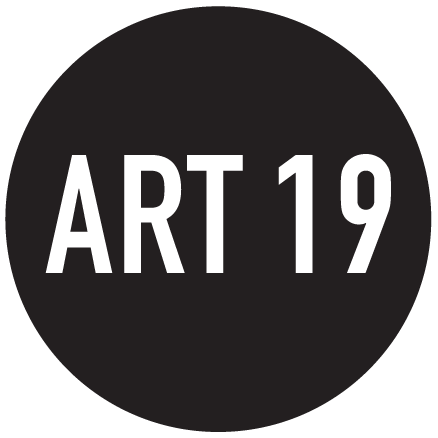Financial Times : The Great Yes, The Great No review — William Kentridge’s operatic tale of fleeing intellectuals (by Shirley Apthorp)
The Aix-en-Provence Festival premiere has exquisite choral music and heart-stopping voices but ends up too polemical
‘The Great Yes, The Great No’ unites musical and theatrical talent from across Africa © Monika Rittershaus
The wonderful thing about work in an art gallery is that you can walk away when you have seen enough of it. As if determined to reproduce for the observer the physical discomfort of its protagonists, William Kentridge’s hyped The Great Yes, The Great No opened in Arles on Sunday as part of the Aix-en-Provence Festival in a hall outfitted with tiny plastic bucket seats bolted together in serried ranks at a distance that would be appropriate for underweight primary-school children. Kentridge has a problem with music theatre. The problem lies in the music and in the theatre. His installation work is intricate and theatrical, multi-layered and profound. Often, when he starts with conventional operatic material — such as Shostakovich’s The Nose or Berg’s Lulu — his weakness is that his work is illustrative, rather than dramatic. He serves up a flood of images that reflect upon the music, but he never tries to reimagine the substance of the work or to interpret characters in space. For his 2017 Salzburg Wozzeck, he worked with director Luc De Wit to good effect. But all of these operas are masterpieces. The Great Yes, The Great No is a work in progress. The fundamental idea, for all its complexity, is engaging. Intellectual exiles travelled aboard the Capitaine Paul-Lemerle from Marseille to Martinique in 1941, fleeing Vichy France. They included Surrealist André Breton, anthropologist Claude Lévi-Strauss, communist novelist Victor Serge, Cuban artist Wifredo Lam and author Anna Seghers. Kentridge has mythical afterworld ferryman Charon captain the ship and tosses in anticolonialist figureheads such as Aimé and Suzanne Césaire, sisters Jane and Paulette Nardal and Frantz Fanon. Joséphine Bonaparte and Josephine Baker are thrown in for good measure, along with Trotsky and Stalin. The plight of leftist intellectual refugees is conflated with those fighting racial and colonial injustice, and chunks of meaningful text are pilfered from Aimé Césaire and a rash of other Surrealists and poets — from Bertolt Brecht to Paulette Nardal — then yelled at the audience. Confused? Fair.
The opera takes place on a ship carrying intellectuals away from France in 1941 © Monika Rittershaus
Please use the sharing tools found via the share button at the top or side of articles. Copying articles to share with others is a breach of FT.com T&Cs and Copyright Policy. Email licensing@ft.com to buy additional rights. Subscribers may share up to 10 or 20 articles per month using the gift article service. More information can be found here.
https://www.ft.com/content/7b7d9d8c-691c-4de8-bbd7-f60e1c080120
The main character in this imaginary voyage is a giant screen at the back of the stage, on to which Kentridge’s meticulous, kinetic sketches and collages are projected. Historical photographs are torn and reassembled, 19th-century bigwigs have their heads replaced by coffee-pots, Kentridge’s trademark drafting compass dances across old maps of the world. Vintage typewriters, bits of steam engines and sewing-machines, handwritten slave-ship lists and typewritten poems tumble upon one another. Performers swap oversized masks of the boat’s real and imagined passengers. There is a Chorus of Seven Women, and there is some exquisite choral music by Nhlanhla Mahlangu. In the past, Kentridge has worked with composer Philip Miller, whose quotidian scores have functioned as an unobtrusive soundtrack. Here, he has clearly set out to collaborate with Mahlangu, music director and percussionist Tlale Makhene and some improvising musicians (cellist Marika Hughes, accordionist Nathan Koci, and pianist Thandi Ntuli). The outcome is a pastiche: moving moments are interspersed with a directionless mix of melodies and sound effects. It is a musical score assembled by committee primarily to underpin Kentridge’s ideas, and although all the musicians play well, it is not enough to lend the evening impetus. The same could be said for the performers. When Xolisile Bongwana sings, time stands still. His voice is sublimely expressive, clear and communicative, with melismatic ornaments that bypass the intellect and strike straight at the heart. Nancy Nkusi gets to deliver lengthy and impassioned narratives as Suzanne Césaire, and though her ponderous texts are a mouthful, she intones them with gravitas and poise. Hamilton Dhlamini plays Charon with impish wit and regal showmanship, supplying some of the missing dramatic tension through force of personality.
‘The Great Yes, The Great No’ has its characters reciting tracts of text © Monika Rittershaus
The women of the chorus are superlative, the musicians polished and dancers/choreographers Thulani Chauke and Teresa Phuti Mojela add another sophisticated layer of performance to the whole. Even so, the layers of portentous text come across as hectoring and intransigent; they are delivered in French and English, with surtitles built into Kentridge’s projections and repeated in French on screens to the side; episodic use of the isiZulu, isiXhosa, Setswana, Xitsonga and SiSwati languages is not enough to disrupt the polemical onslaught. The Great Yes, The Great No draws its title from Greek poet Constantine Cavafy’s Che Fece . . . Il Gran Rifiuto (Who Made . . . The Great Refusal), a work that — as the title suggests — praises positivity and warns of the perils of its opposite; Kentridge has been quoting it since 1985. Given the visual complexity of the work, his self-referential style is both expedient and a core aspect of his artistry. This premiere has an almost endless list of partners and co-producers, and will go on to Luxembourg, Recklinghausen, Miami, Berkeley, Montreal and doubtless many other stations. Perhaps the sheer scale of the undertaking contributed to the sprawling ambition of the piece, which tries to be simultaneously political, philosophical, historical, revolutionary, metaphysical, surreal and witty. Perhaps, given time to evolve and coagulate, it will grow into its goals.
Article published on https://www.ft.com



